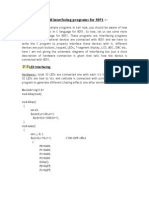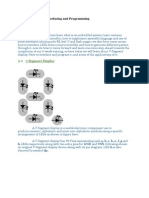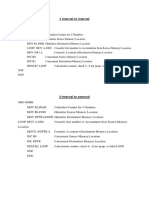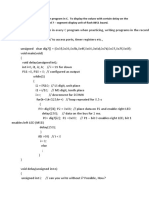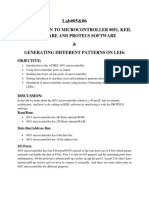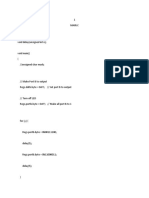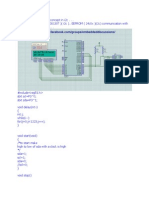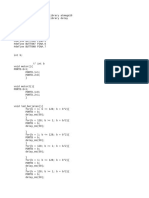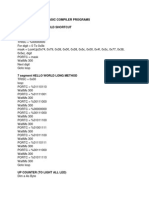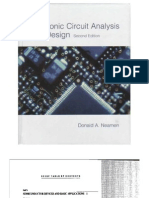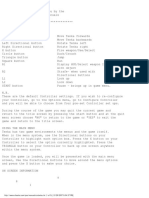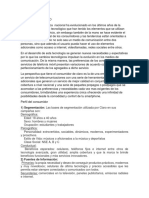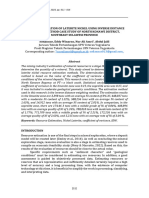0% found this document useful (0 votes)
127 views16 pages+/file Name: DDRT //purpose: Write Programs in C //programmer: Carlos de La Cruz, Terky //date:3/30/2017
The document contains code for several C programs that control inputs and outputs on a microcontroller:
- The programs control 7-segment displays and LEDs on ports by setting data direction registers and output values.
- One program flashes different numbers on the 7-segment display while another flashes different LEDs depending on the states of dip switches.
- A final program is provided that continuously cycles through a pattern of numbers on the 7-segment displays and lights on the LEDs to create an animated effect.
Uploaded by
MilCopyright
© © All Rights Reserved
We take content rights seriously. If you suspect this is your content, claim it here.
Available Formats
Download as DOCX, PDF, TXT or read online on Scribd
0% found this document useful (0 votes)
127 views16 pages+/file Name: DDRT //purpose: Write Programs in C //programmer: Carlos de La Cruz, Terky //date:3/30/2017
The document contains code for several C programs that control inputs and outputs on a microcontroller:
- The programs control 7-segment displays and LEDs on ports by setting data direction registers and output values.
- One program flashes different numbers on the 7-segment display while another flashes different LEDs depending on the states of dip switches.
- A final program is provided that continuously cycles through a pattern of numbers on the 7-segment displays and lights on the LEDs to create an animated effect.
Uploaded by
MilCopyright
© © All Rights Reserved
We take content rights seriously. If you suspect this is your content, claim it here.
Available Formats
Download as DOCX, PDF, TXT or read online on Scribd
/ 16


